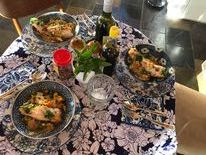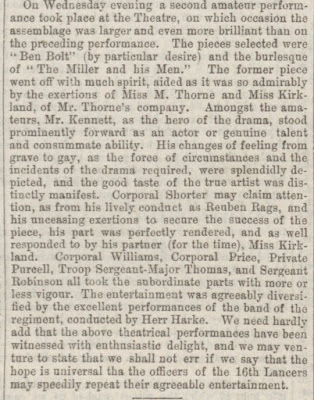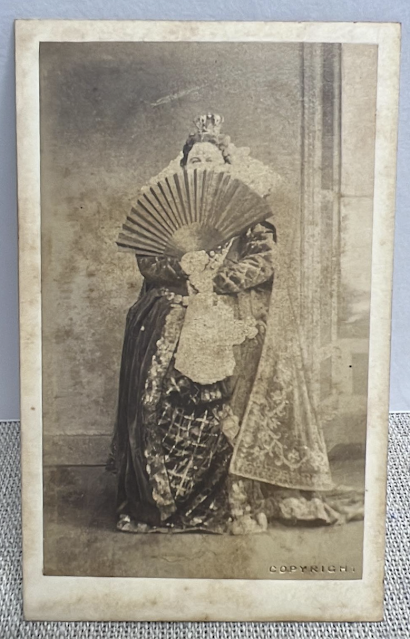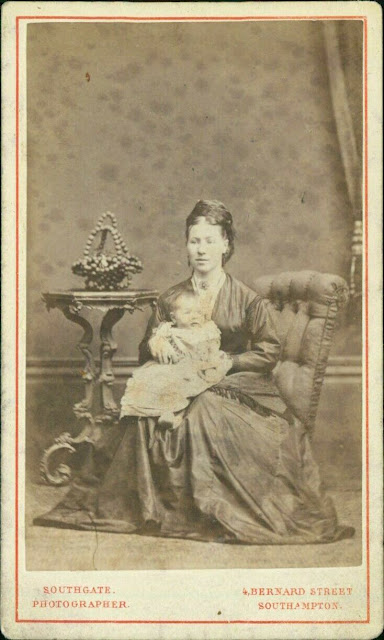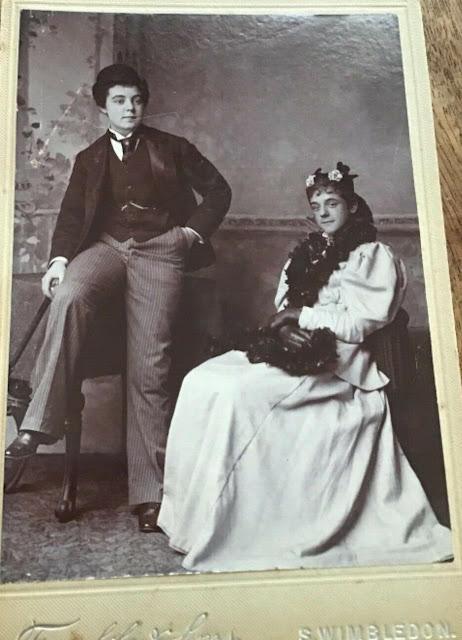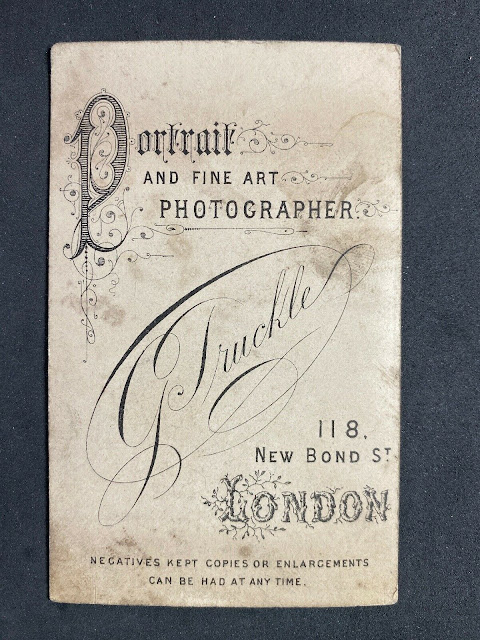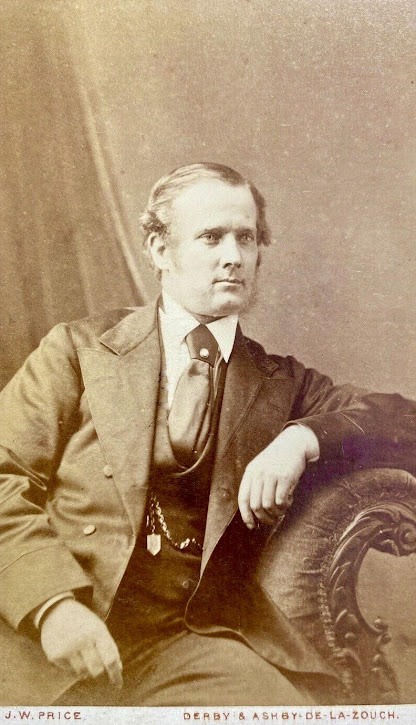These ladies having been sitting in my in box for a bit, so I thought they should come out and undergo a moment under the blaze of the Gänzlscope...
Eliza
Harriet
Constance
Norah (aged 5 1/2)
and Jessie
Most of them, give or take some execrable handwriting, confessed their identity pretty finely. Eliza was well inscribed
So, was it 'little Lydia' who re-inscribed the picture, many years later? Eliza Esther COOPER was the daughter of George Cooper, and she was born at Milton-near-Gravesend in 1847, soon after his marriage to Miss Sarah Snoswell. Father was a steward on a steam-packet, later 'second waiter', and finally he came home from the sea and settled at Orsett as a 'carriage cleaner'.
In the meanwhile, he had given Eliza two sisters and two brothers, and the family had moved to another maritime town, Southampton. In the 1871 census, Eliza can be seen working as a cook at the Lodge, Jervis Street, Bournemouth, but she soon became the wife (24 July 1871) of one John Charles Powell, carpenter, and gave birth rather too quickly to 'little Lydia' -- Lydia Sarah Powell. There were to be six more children before Powell's death in 1888.
Oddly, it seems that while John and Eliza brought up their other children, Little Lydia was brought up by her Cooper grandparents, and she lived with the widowed Lydia Ann Louisa Cooper for some twenty years. In 1906 she married Glasgow art master, Donald Wilkie who survived her when she died 31 October 1960.
Eliza remained in Southampton, where she died, at 7 Forest View, 1 January 1939.
Oh 'love to Aunt Fanny'. Fanny Sugden Cooper (1853-1947) was indeed Eliza's sister. A lifelong spinster.
Next up: Harriet.
Harriet Mary WARREN (b Cambridge 17 March 1836; d Surrey 10 February 1914) was born in Cambridge, the daughter and first child of John Warren, liquor merchant' and his wife Harriet Elizabeth née Wettenhall. Mr Warren can be seen in the town's Downing Street in 1841, selling wine, and having added twice to his stock of children. By 1851, he has become a commercial traveller, the children count has risen to seven, but the population of their home in Maid's Causeway also includes two house servants, so I guess he was travelling hopefully. In 1861, papa is a 'commission agent'. Hmmm. Still seven children (no mean feat in the era), but down to one servant. Two of the boys are now merchant's clerks, but Harriet is not working. And in 1867 she married. By which time papa was billed as 'esquire'.
Her husband was Jacob Stanley (b Torrington 1840; d 30 Crescent Grove, Clapham 7 July 1920) , son of a decidedly active Wesleyan minister, and born while father was stationed in Devon. Intended to follow the paternal profession, he was sent to St John's, Cambridge, where he duly gained his MA, married Harriet, and went to work as ... a brickmaker in Nuneaton, with brother Reginald. But Jacob's heart was not solely in bricks and tiles. He became a prominent member of the Nuneaton Amateur Dramatic Society, and the painter of their scenery. He also painted in oils, and eventually he retired from business as described himself solely as an historical painter in oils.

The family moved to Nightingale Lane, Streatham, where three of the four daughters also went in for painting. The fourth was named Mabel Stanley, a name dear to all followers of
The Pirates of Penzance.Harriet seems to have been an invalid latterly, and died in 1914; Jacob in 1920. His story can be read at http://www.reginaldstanley.com/jacob-stanley.php
 |
| Jacob Stanley |
Constance and child ..
Constance BACCHUS (b Edgbaston 15 July 1853; d 33 Longridge Rd, Earl's Court 9 October 1914) came from a substantially well-off family. Her father, William Bacchus (1812-1857), was a manufacturer of iron and a pillar of the Birmingham Hospital, and her mother, Emma née Saunders (1817-1884), left a widow with five children a few years after Constance's birth, kept up an establishment at Eastwick House, Great Malvern, with her four daughters (Maria, Catherine, Annie & Constance), one son, a governess, a nurse, a lady's maid, a cook, three house servants ... They subsequently removed to Hastings, where Constance married Dr Douglas Duke (b Chichester 1850; d Villa Albert, Cannes, France 22 February 1900)), and gave birth to the baby above, Douglas St John Duke (b St Leonards 24 June 1877; d Guildford 8 May 1942), and thereafter a Dorothy Constance (1879-d Villa Albert, Cannes, France 4 March 1900) and a Neville Oswald (b St Leonards 21August 1880; d 16 June 1933), ans a second daughter (23 October 1884) who did not survive.
Douglas became a solicitor, Neville a dentist. After the deaths of her husband and daughter, Constance sold up their home, Winstowe, on the Pevensey Rd, and left Hastings for Earl's Court, and subsequently a residential hotel, with her sister Annie, up to her death in 1914.
Norah aged 5 1/2
Norah Madeline BATTYE (b 66 Queens Gardens Paddington 15 June 1873; d 84 Cadogan Square 13 February 1957)
Looks a little madame in the making, yes? I was sure there would be a story behind this one. But ... it seems, just a comfortable life, largely in the salubrious confines of London's 84 Cadogan Square, with lots of money, lots of servants, the occasional reported appearance at court or at someone else's fashionable wedding.
Norah came from a family of landed gentry and legal gentlemen .. on both sides. An article I came upon describes thus: 'In 1866, Richard Battye, of Skelton Hall and Crosland Hall,Yorkshire, married Frances Bibby, the daughter of James Jenkinson Bibby, the High Sheriff of Shropshire and an enormously wealthy man who had founded the Bibby Shipping Line. In 1867, Richard and Frances had their first child and only son, Lionel Richard James Scholefield Battye, who went on to an Eton education and a career in the 13th Hussars where he rose to the rank of Captain. He thus became well known as Captain Battye.
Captain Battye's father and grandparents died between 1869 and 1873, leaving 331 acres of West Riding land and property to his widowed mother, Frances. This included land in Ossett, including Sowood Farm, and in Horbury including Hallcroft, Nether Hall (subsequently the Shepherd's Arms), and Horbury Hall. Many of the Horbury land and property ownerships had once belonged to John Scholefield who was, of course, Captain Battye's great grandfather.
Captain Battye's mother, Frances, died in 1921 and Captain Lionel Richard James Scholefield Battye of 64, Cadogan Square London died on 15th May 1947 and the huge estate which he inherited was subsequently sold.
Part of the Bibby Estate was Hardwick Grange where the Battyes hung out.
 |
| 84 Cadogan Square |
Anyway, Lionel Battye was Norah's only brother. But there were several surviving sisters Millicent Audrey (1871-1966), Hilda Frances Marion (1869-1953, Mrs Alfred Bibby), Marjory Cecil Rachel (1874-1899, Mrs George Percy Brasier-Creagh) .. and more than enough of everything to go round ten times.
But the family had its tragedies. Father Richard died 'of an accident' (no one says what kind!) at Hardwick Hall aged 39. Marjorie married a capatin in the Bengal Lancers, went out to India and died in Rawalpindi bringing a little Brian Richmond Brasier-Creagh (12 September 1899) into the world. The widower left India for South Africa and a command with Roberts' Horse. Within four months of his wife's death, he too was dead. Little Brian was sent back to Britain, grandmother Frances and aunties Muriel and Norah. And so it goes on ...
In 1939 the three unmarried siblings -- Lionel, Muriel and Norah -- are living together ..
Well, if Norah herself didn't have a story, her family certainly did.
Jessie
Jessie Fernley BRUNDRIT (b Runcorn 18 February 1856; d 37 Croxteth Rd 29 November 1907). Yes, it was Brundrit. Daughter of William Wright Brundrit (1828; d The Mount, Runcorn 29 July 1873), stonemerchant and shipbuilder, director of the local waterworks, and of his wife Mary Anne née Hazelhurst (1831-1912), also from Runcorn (m 31 March 1853). What a beautiful young girl.
She, too, lost her father (latterly a quarry owner, magistrate, JP) at a too-early age, just 45, after he had fathered a brood of chicks -- Dennis (1854) xx (1855), Jessie (1856), Mary Anne Hazelhurst (1857-1883), Helen Ada Louisa (1860), William Hazelhurst Wight (1862), Fanny Eliza Octavia (1863), Arthur Fernley (1866) -- but there were plenty of Brundrits in town to help out ...
Well, I don't know if they did .. but Mary Anne obvioiusly helped out herself. In 1881 sjhe is visiting the very well-off family of a Heaton Norris cotton-merchant. Surname: Fernley. Oyoy! In 1891, I see her as the wife (?) of an elderly Scots retired chemical manufacturer named Neil Mathieson, at Beechfield 9 Croxteth Rd, Toxteth Park. Jessie, aged 45, is with them and .. a cook, two housemaids, a kitchenmaid, a waitress ... Oh! Look! 1893. Cabin class to New York! Jessie Brundrit, no profession, transient passenger from Liverpool along with Mrs L? J Mathieson, children May and Nora, a nurse ... going to Saltville ..
So who are these Mathiesons? There is Neil (b Scotland 1823; d New Brighton 18 September 1906), all right, living in Runcorn already in 1871. A widower, with 3 daughters, 2 sons .. 'manufacturing chemist and copper extraction ..' .. and Yes! 1880. Married Mary Anne Brundrit!
Neil left over 100,000L ... but I think children of the first Mathieson marriage saw more than the widow. Still, when Mary Anne died at Croxteth Rd, 26 November 1912, she left a comfy 7880L.
PS Well! Mathieson was born in Campelltown, Scotland and came to work for J&T Johnson, soap and alkali makers in Runcorn, where he became works manager. Around 1860 he joined two other Johnson's workers, in setting up the Old Quay Works in Runcorn to make soap and to extract copper by the Henderson wet process. In 1865, when John & Thomas Johnson became registered under the Companies Act as the Runcorn Soap and Alkali Company, Mathieson invested in the company, buying 175 shares. He left the Old Quay Works to set up his own business, Matheison and Company in Widnes in 1870. Matheison and Company became one of the most important companies in Widnes. Its main business was producing alkali by the Leblanc process and they also produced glycerine from soap waste from Gossage's. Later Mathieson's third son, Thomas Train Mathieson, became a partner in the business.
Neil's eldest son, Douglas Dugald (1861–86), an assistant manager at the works, was killed after being struck by a falling derrick. In 1892 Mathieson obtained a charter in Saltville, Virginia (yes!) to open an alkali plant, buying out the Holston Salt and Plaster Company. His son Thomas Train Mathieson went to USA to supervise this business, the Mathieson Alkali Company, which was later to develop into the Mathieson Chemical Corporation.
Well, Jessie, you turned out to be quite a can of Runcorn beans!
So that's my five ladies identified. Quite a bunch!
I think I deserve a slightly early apéritif!


